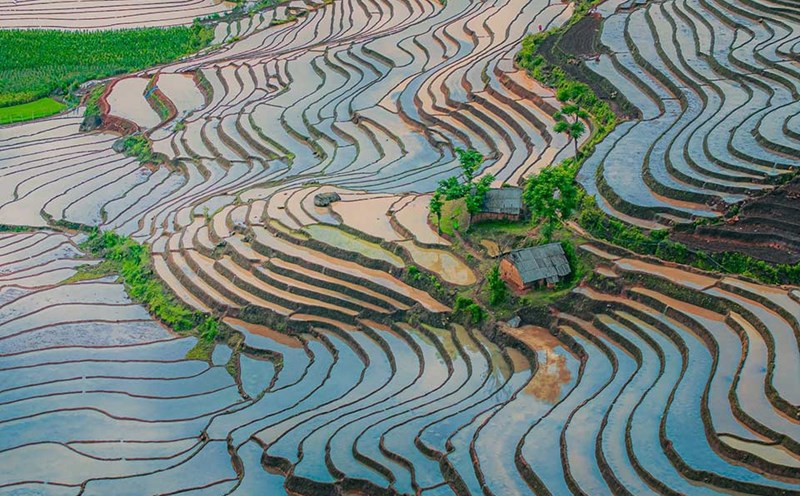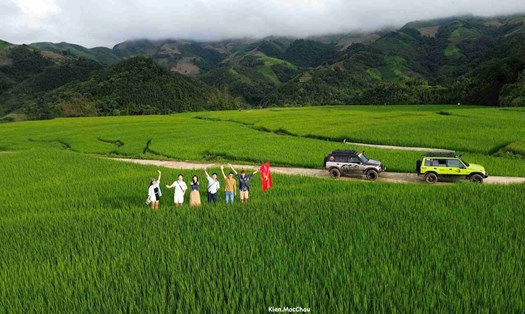In the pouring season, this place is as beautiful as a painting, stirring up people's hearts.
To create winding, picturesque terraced fields, people do them all by manual methods, using hoes and peach shovels to dig and transport water to the fields. The terraced fields have different widgets, narrow, long, short, high, low running along the back of the mountain.
The flood season is the beginning of the spring rice crop and the annual rice crop, when people start to draw water into the terraced fields. When the water source is abundant, people focus on making land and growing rice. The terraced fields are filled with Volumes of water, sparkling and sparkling like mirrors, extending to the horizon.
Ta Xua commune terraced fields are located at an altitude of over 1,500m above sea level, with beautiful scenery, especially during the ripe rice season, attracting many tourists to visit and take photos. Taking advantage of this opportunity, some households in Ta Xua have begun to build an agricultural tourism model associated with national identity.
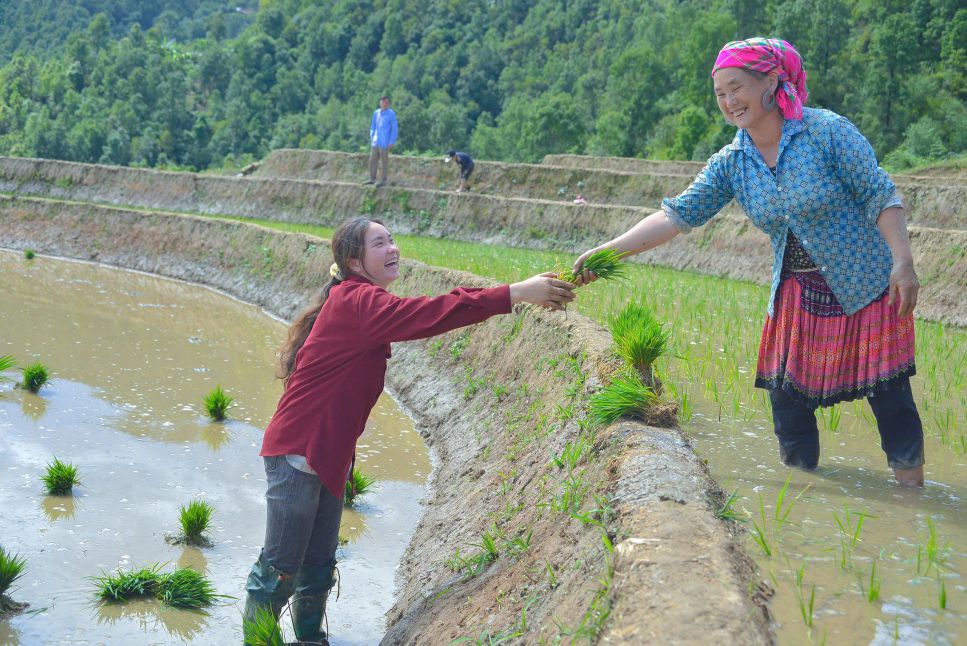
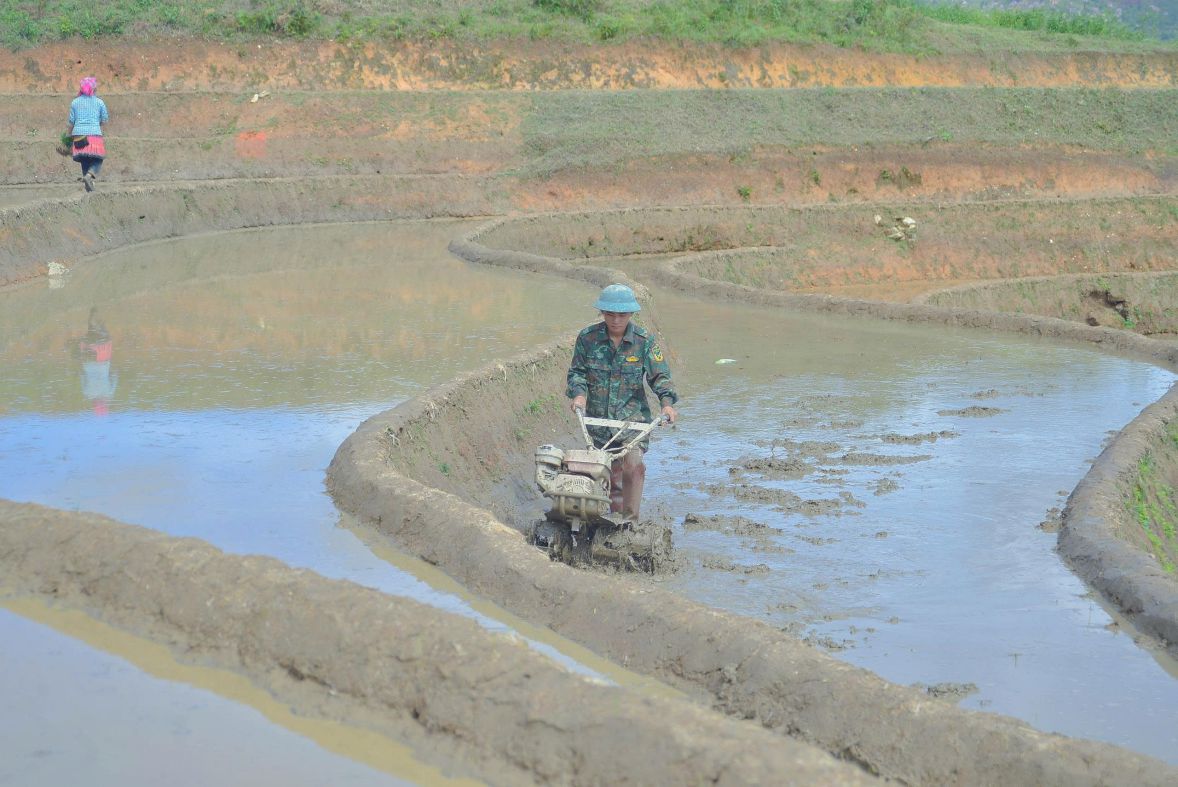
Mr. Giang A Chenh, a member of the youth start-up group of Ta Xua commune, shared: "Previously, we were only used to making nests and fields. Now seeing that the villages in Ta Xua are making tourism effective, I also follow. My wish is to open a small homestay, organize for visitors to take photos in the monsoon season and the ripe rice season. Touring in the village, you won't have to go far to work".
The beauty of the flood season is also demonstrated in the strength of solidarity, when the whole rice village collects, rice growers exchange jobs, relatives help each other; young people, healthy people help the elderly, weak and lonely. Each type of apple planted in terraced fields is the wish of the people for a flourishing, heavy rice crop, a bumper golden harvest season.
In Son La province, terraced fields are mainly concentrated in Ngoc Chien, Chieng Hoa, Muong La, Ta Xua, Pac Nga, Co Ma, Muong Gion, Xuan Nha, Pung Banh, Van Ho communes... with a total area of over 2,000 hectares; most of the terraced fields are only planted in one crop each year in June.
According to the people in Muong La commune, terraced fields have been abandoned by their ancestors for generations, are the main source of stable food for the people and are valuable assets imbued with the traditional culture of the highland people.
Previously, due to difficult transportation, there were not many terraced fields. Since the establishment of inter-village and inter-commune transport routes, it has created conditions for people to introduce Mechanization and apply technical advances to production, as well as facilitate the transportation of agricultural products, so people have proactively expanded the terraced fields.
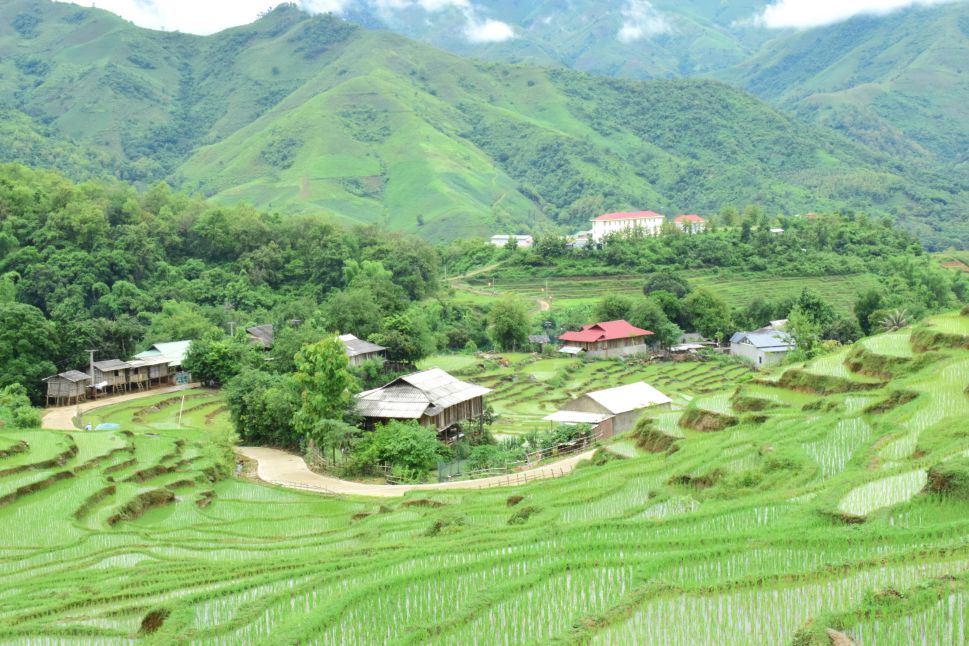
In particular, in recent years, in addition to introducing local pure rice varieties such as red rice and white rice, people have also introduced new rice varieties to plant, with a yield of over 4 tons/ha. Many households with excess food have sold, increasing their income.
Mr. Chang A Chu, Nong Bong village, said: "Previously, my family had 100m2 of terraced fields left by our grandparents. After many years, my family expanded them, so now there are more than 5,000m2.
Thanks to the care techniques of the farm's staff, the yield is much higher, this year's crop, my family harvested more than 100 bags of rice, enough food for the whole year. Compared to producing food crops on the basis of a nursery, intensive agricultural cultivation is much more effective.
Moreover, upland fields retain the soil's fertility, taking less time to care for, especially without using pesticides".
terraced fields are preserved and promoted by people in the highland communes here, especially when there are planning projects for some localities to develop community tourism. In the near future, beautiful terraced fields will be an ideal destination for visitors to enjoy and have more experiences in the flood season.

